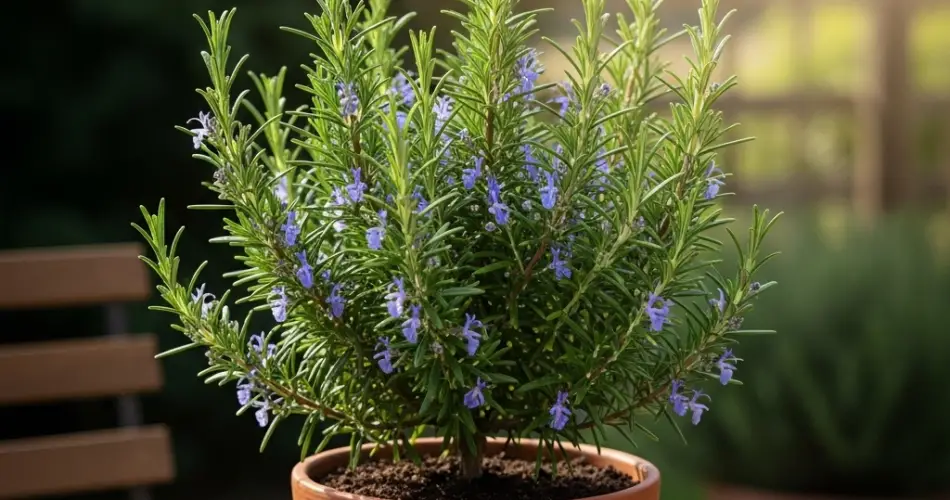Rosemary (Rosmarinus officinalis) is a wonderfully aromatic herb cherished for both its culinary and medicinal uses. Known for its needle-like leaves and woody fragrance, rosemary is also a favorite among gardeners for its low maintenance and hardy nature. Whether you’re growing it on a sunny balcony, in a windowsill pot, or in your backyard, rosemary can thrive with the right care — and when you know how to encourage faster growth, the results can be impressively rewarding.
Here’s a comprehensive guide to help you grow rosemary more quickly and successfully than ever before.
1. Choose the Right Variety
Before you start planting, it helps to know there are different types of rosemary. Some grow upright, while others spread like a ground cover. If you’re short on space or growing indoors, compact varieties such as ‘Blue Boy’ or ‘Prostratus’ are ideal. For more abundant harvests and quicker growth, choose vigorous varieties like ‘Tuscan Blue’ or ‘Arp.’
Start with healthy seedlings or cuttings from an established plant to speed up the growing process. While rosemary can be grown from seeds, it’s a slow process — using young plants or rooted cuttings gets you faster results.
2. Give It Full Sun
Rosemary loves the sun. The more sunlight it receives, the better and faster it grows. Place your rosemary in a spot that receives at least 6 to 8 hours of direct sunlight daily. If you’re growing indoors, position the pot on a bright windowsill, preferably south-facing.
For faster growth, especially in lower-light environments, you can supplement with a full-spectrum LED grow light. Rosemary thrives in warmth and brightness, and increasing light exposure is one of the quickest ways to boost development.
3. Use Well-Draining Soil
Like many Mediterranean herbs, rosemary prefers dry, well-draining soil. A sandy or gritty soil mix works best. If planting in containers, use cactus or succulent mix, or make your own blend using potting soil, perlite, and coarse sand.
Avoid heavy or clay-based soil, as rosemary roots don’t like to sit in water. Excess moisture can lead to root rot and slow or stunt growth significantly.
4. Don’t Overwater
One of the most common mistakes when growing rosemary is overwatering. Let the top inch of soil dry out completely between waterings. Once established, rosemary is drought-tolerant, and it grows better when it’s slightly on the dry side.
When watering, do so thoroughly, allowing water to drain freely. Avoid letting water collect in trays or saucers. Consistently wet soil can stress the plant and slow its development.
5. Feed with the Right Fertilizer
Although rosemary doesn’t need heavy feeding, the right nutrients can give it a healthy growth boost. Use a balanced, water-soluble fertilizer (such as a 10-10-10 or 20-20-20 formula) once a month during the growing season — spring through early autumn.
You can also mix in some slow-release organic fertilizer or compost into the soil when planting. Avoid over-fertilizing, as this can produce leggy growth with less flavor and aroma.
6. Prune Regularly to Stimulate Growth
Pruning rosemary isn’t just for shaping — it encourages the plant to grow faster and fuller. Trim young plants lightly once they reach about 6 inches in height. Snip just above a leaf node to encourage branching.
As the plant matures, regular harvesting and pruning promote bushier growth. Remove any dead or woody stems to keep your rosemary fresh and vigorous. Frequent cutting during the growing season helps redirect energy into new shoot production.
7. Repot or Transplant When Needed
If you’re growing rosemary in a container and notice slowed growth, check the roots. Rosemary grows relatively fast and can become root-bound. Repot every 12 to 18 months into a slightly larger container with fresh soil.
If you’re growing outdoors, space rosemary plants about 2 to 3 feet apart to give them room to spread. Crowded plants compete for resources and grow more slowly.
8. Protect from Cold and Pests
Rosemary is hardy in warm climates but sensitive to extreme cold. If you live in a region with cold winters, grow your rosemary in pots so you can bring them indoors when temperatures dip below 30°F (-1°C).
Pests like aphids and spider mites may occasionally appear, especially on indoor plants. Wipe leaves clean and use neem oil or insecticidal soap to control infestations. Keeping your plant healthy is the best defense against pests and disease.
9. Harvest the Right Way
Frequent harvesting encourages faster growth. Snip rosemary sprigs using clean scissors, ideally in the morning when the oils are most concentrated. Always leave enough foliage so the plant can continue photosynthesizing and producing energy.
If you’re drying rosemary for storage, hang the cuttings upside down in a well-ventilated area, out of direct sunlight. Dried rosemary retains its flavor and aroma for months when stored in an airtight container.
Final Thoughts
Growing rosemary can be quick and rewarding when you understand its preferences and natural rhythm. With the right variety, proper lighting, well-draining soil, and thoughtful care, your rosemary plant will flourish faster than you expect — whether you’re cultivating it on a kitchen windowsill or a sunny patio.
Not only will you have fresh rosemary at your fingertips, but you’ll also enjoy the beauty and scent of this timeless herb year-round.



